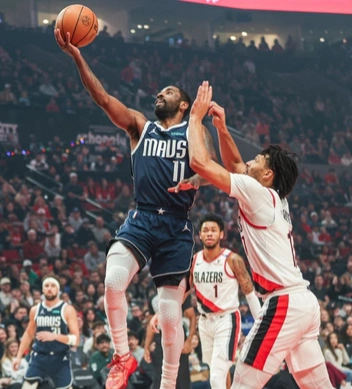Celebrity Style Posts on Crowch
After her breakout in Fifty Shades of Grey and intense roles in films like Suspiria, Dakota Johnson returns in a fresh and intriguing new feature. In A24’s romantic comedy Materialists, directed by Celine Song, she plays Lucy—a successful New York matchmaker seeking the perfect partner for her client. The plot plunges into a love triangle: Lucy is torn between the wealthy, polished Harry (Pedro Pascal) and the charming yet flawed John (Chris Evans)
This isn't just your typical rom-com. It promises to redefine the genre through subtle commentary on modern dating culture and emotional nuance. The chemistry between Johnson, Evans, and Pascal lends depth, showing Johnson as both charismatic and vulnerable—a sign of her growth toward more mature roles.
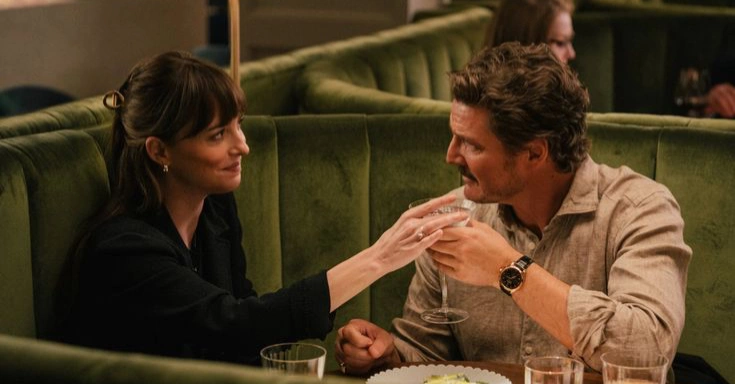
Set against the fast-paced backdrop of contemporary Manhattan, Materialists explores romance, identity, and class through the lens of one woman caught between what she thinks she wants and what her heart truly needs. Lucy, portrayed by Dakota Johnson, is no stranger to love — or at least, to managing it professionally. As one of New York’s most sought-after matchmakers, she prides herself on understanding human behavior, compatibility, and emotional logic. But when her own emotions become entangled in a client's case, the control she’s known begins to slip.
What makes Lucy compelling isn’t her confidence — it’s her quiet internal contradictions. She's smart, capable, and observant, yet beneath her curated image lies someone longing to be chosen not for her poise or insight, but for who she is when she isn’t being useful. Through nuanced writing and Johnson’s layered performance, Lucy becomes a portrait of modern womanhood: self-made and self-aware, yet vulnerable to the timeless confusion of love.
Director Celine Song brings the same emotional precision she demonstrated in Past Lives, infusing every scene with subtext and stillness. In Materialists, romantic tension simmers through microexpressions, offhand remarks, and loaded silences. It’s a film that understands love is rarely loud — it’s felt most deeply in what remains unsaid.
As Lucy becomes emotionally involved with both Harry and John, her own values come into question. Harry offers security, sophistication, and the promise of a carefully constructed life. John, on the other hand, is unpredictable — a failed musician with a messy past, sharp wit, and genuine warmth. What begins as a professional obligation quickly spirals into a personal dilemma, forcing Lucy to confront not just her desires, but her fears.
Dakota Johnson captures this tension with impressive control. Her portrayal is filled with small but resonant choices — a pause before a response, a flicker of doubt mid-smile, or the way she breaks eye contact when emotions feel too raw. Lucy is never reduced to a trope; she’s allowed to be both composed and confused, kind and selfish, certain and overwhelmed.
Visually, the film leans into clean compositions and tactile, lived-in spaces — cafes lit with golden hour sunlight, cluttered apartments with half-written songs, luxury rooftops where silence feels more intimidating than words. This rich visual storytelling enhances Lucy’s internal state, balancing between the glitter of curated perfection and the warmth of imperfection.
The script resists easy conclusions. Rather than choose one man or the other in predictable rom-com fashion, Materialistsleans into ambiguity and growth. Lucy's journey is ultimately less about choosing between two men and more about reclaiming her own voice in a world that often sees women as facilitators of others’ love stories, rather than protagonists of their own.
Supporting performances — including a sharp turn by Greta Lee as Lucy’s best friend and confidante — provide levity and depth, rounding out a world that feels as emotionally real as it is narratively satisfying.
For Dakota Johnson, Materialists signals a new chapter. She sheds past personas and delivers a grounded, emotionally intelligent performance that shows restraint, complexity, and grace. Her Lucy is not an ideal — she’s a person, and that’s what makes her unforgettable.
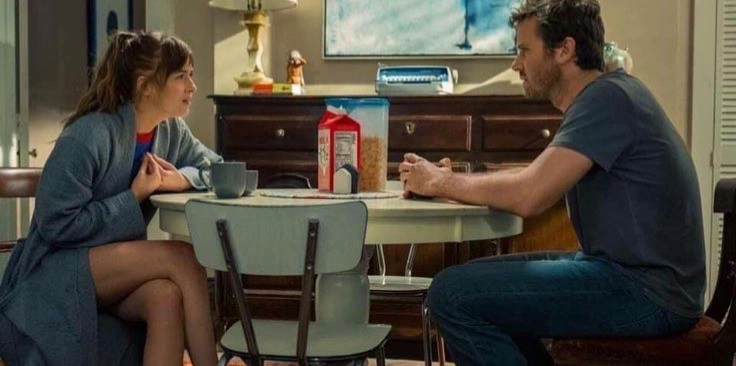
Mahershala Ali returns to the small screen in Crossing Lines, a crime thriller that moves across national borders — and moral ones. His character, Etienne Durand, is a high-ranking commissioner investigating transnational crimes that blur every sense of jurisdiction — human trafficking, murder, corruption.
But Durand isn’t just an officer — he’s a man with a past. His face carries the weight of everything he’s seen and everything he’s done. He looks at both victims and criminals not with judgment, but with the weary eyes of someone who understands that right and wrong are rarely clean lines.
Each case brings him closer not just to answers, but to inner reckoning. He knows the law doesn’t always lead to justice, and sometimes stopping evil means compromising with it. His journey is less about evidence and more about identity.
Ali’s performance is restrained and powerful. His Durand doesn’t shout; he listens. He doesn’t break down; he bends under pressure, silently and intensely. This is no glossy detective story — it’s a portrait of a man walking the tightrope between justice and survival.
Crossing Lines offers no easy resolution. It pulls viewers into a world where truth is elusive and morality is messy. At its center is Ali, not as a hero, but as a man doing his best not to be lost in the darkness he walks through.
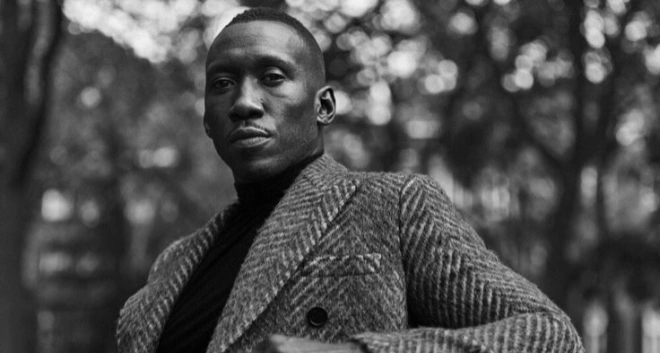
Set against the haunting backdrop of Europe’s political undercurrents and shadowy power structures, Crossing Linesdelves into the uncomfortable spaces where justice systems fail and borders become irrelevant. The series eschews traditional procedural tropes in favor of a slow-burning, character-driven narrative where each case peels back another layer of systemic rot — and of Etienne Durand himself.
The show’s structure is unique: each season centers on a major investigation, but within that arc are self-contained episodes that explore the human stories behind the crimes. A missing refugee girl in Hungary leads to a black-market organ ring operating through diplomatic channels. A double homicide in a Paris hotel uncovers a trafficking network funded by legitimate international foundations. These aren’t random crimes — they’re symptoms of a much larger illness.
Durand is partnered with a multi-national task force, but it’s no idealistic melting pot. His team — a German cybercrime analyst haunted by her own hacking past, a British ex-undercover cop rebuilding his life, a young Italian interpreter with ties to organized crime — bring their own ghosts, biases, and moral contradictions. The tension within the group mirrors the chaos of the world they’re trying to protect, forcing them to question not just how far they’re willing to go, but what it’s even for.
As political pressure mounts, Durand’s decisions grow murkier. Intelligence agencies with their own agendas, local police eager to pass responsibility, and bureaucrats who prefer silence over scandal — all contribute to a web of obstruction. Durand must navigate not just crime scenes, but diplomatic meetings, coded threats, and moments where the law becomes irrelevant in the face of power.
What makes Crossing Lines stand out isn’t the thrill of the chase, but the weight of the aftermath. The victims aren’t forgotten once the case closes — their stories echo through Durand’s conscience, complicating each step forward. Sometimes the perpetrator walks free, other times the arrest brings no closure. The question becomes not “Did we win?” but “Was this the best we could do?”
Visually, the series leans into natural lighting, muted palettes, and tight framing. Cities feel claustrophobic; nighttime scenes blur the line between safety and danger. The camera lingers on Durand’s silences, on glances between characters, on small, human choices that say more than words ever could.
The writing is rich with subtext — political, psychological, and emotional. Conversations unfold in layered exchanges, often with more meaning left unsaid. Flashbacks are rare but precise, giving just enough to hint at Durand’s haunted past without reducing him to a cliché.
More than anything, Crossing Lines is a meditation on compromise. It asks hard questions about what we sacrifice to protect others, and whether justice means more than simply enforcing rules. Etienne Durand is no savior — he’s a witness to a world unraveling at the seams, trying to hold something together with frayed conviction and quiet humanity.
In a landscape full of fast-paced thrillers and binary moralities, Crossing Lines slows down, looks inward, and offers something far rarer: a story that respects its audience’s intelligence, and a lead character who earns empathy not through perfection, but through persistence.
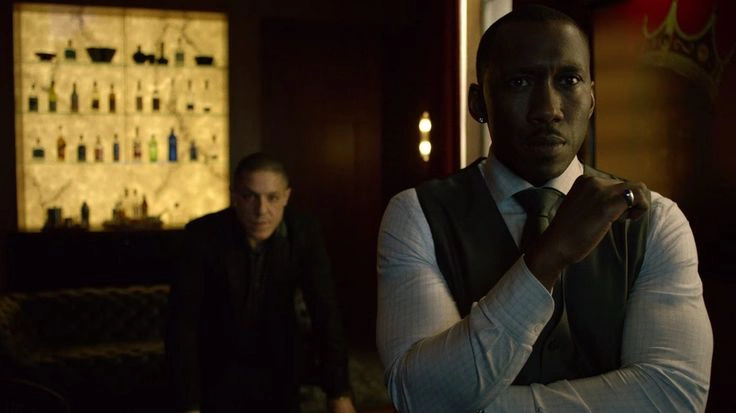
In 2025, How to Train Your Dragon returns in a live-action adaptation, and at the heart of the story again is Stoick the Vast—brought to life by Gerard Butler According to 17-year-old co-star Mason Thames, Butler’s commanding presence on set made everyone “cower,” portraying both a formidable Viking leader and a tender father.
Known for his physical presence in 300 and charismatic roles in films like Law Abiding Citizen, Butler brings emotional weight to Stoick—a warrior ready to evolve for his son and his people. His return guarantees a combination of epic scale, family drama, and heartfelt storytelling.
🎥 Why it matters:
- Butler blends action and emotional depth in a paternal role.
- Elevates an animated character for live-action epic storytelling.
- Explores fatherhood and leadership in a mythical, dragon-filled landscape.
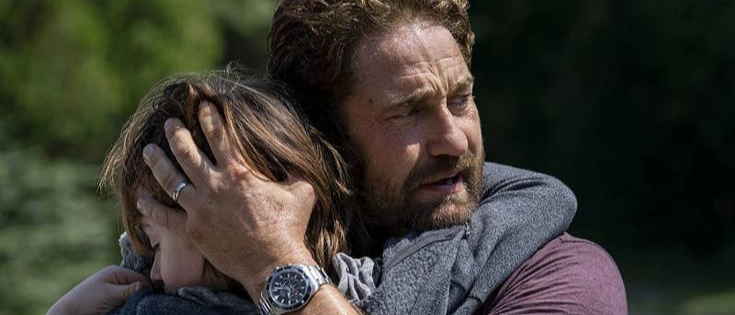
The live-action How to Train Your Dragon (2025) marks one of the most ambitious cinematic reimaginings of a beloved animated franchise. Directed by Dean DeBlois, who returns to shepherd his own legacy, the film aims not to simply replicate the magic of the original — but to enrich it with grounded emotion, layered performances, and visual realism. At the center of this retelling stands Stoick the Vast — a towering presence in both lore and heart — reinterpreted by Gerard Butler with fresh intensity and vulnerability.
In this adaptation, Stoick isn’t just a roaring warrior with a giant axe and a booming voice. He’s a man grieving, hoping, evolving. Haunted by the death of his wife and the uncertain future of his people, Stoick finds himself at a generational crossroads. Dragons are no longer just beasts to be fought — they’re a mirror, challenging what it means to lead, to protect, and to let go. His relationship with Hiccup, now on the cusp of manhood, becomes the emotional spine of the narrative.
Gerard Butler taps into that duality — the iron-willed Viking chief and the deeply conflicted father. This isn’t the stylized shouting of action cinema. His Stoick carries silence like a shield. In one of the film’s most intimate scenes, he places his palm against a dragon’s scarred hide, not with fear, but recognition — a man who knows what it is to be misunderstood, to be shaped by survival.
The visual design of Stoick is both faithful and elevated: a blend of Norse armor realism with fantastical elements — weather-worn furs, hand-carved sigils, and the scars of countless battles. Yet it’s the eyes that hold the truth — Stoick watches Hiccup not as a soldier would an apprentice, but as a father afraid he may lose his son to a world he no longer understands.
Mason Thames, playing Hiccup, creates a dynamic chemistry with Butler that captures the nuance of a boy emerging from under his father’s shadow. Their exchanges oscillate between friction and mutual awe. Hiccup’s innovations — his desire to befriend dragons, not kill them — force Stoick to question his legacy and the cost of traditions built on fear.
Butler’s return to the role, this time in live-action, adds a layer of meta resonance. Having voiced Stoick in all three animated films, he approaches the character not from scratch, but from within — adding subtle layers to what was once a heroic archetype. His performance feels lived-in, like he’s grown alongside the character himself.
The world-building supports this transformation. The village of Berk has been reimagined not just as a fantastical setting, but as a living, breathing society — textured, flawed, and beautiful. Dragons are realized through a mix of practical effects and top-tier CGI, giving them weight, presence, and emotion. Toothless, in particular, becomes more than a creature — he’s a symbol of trust, bridging the human and the mythic.
The film also leans into themes of masculinity, vulnerability, and generational inheritance. Stoick’s arc is not about conquering dragons, but conquering pride. Through Hiccup’s journey, he learns that strength can mean listening, that bravery can be gentle, and that leadership sometimes means letting the next generation forge a new path.
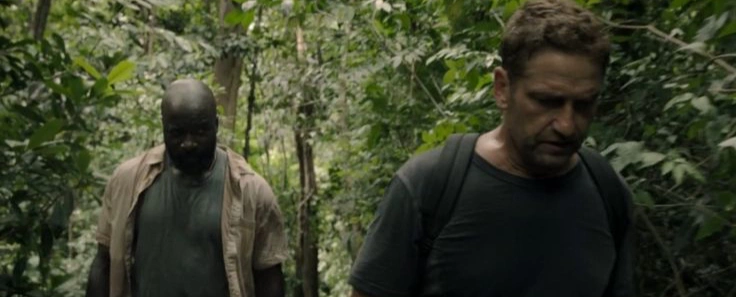
Composer John Powell returns to reimagine his iconic themes for a full orchestra and live instrumentation, creating soaring emotional peaks and hushed, intimate valleys that underscore Stoick’s internal journey.
Ultimately, How to Train Your Dragon (2025) isn’t just a fantasy epic — it’s a story about fatherhood, legacy, and learning to see the world through younger eyes. Gerard Butler doesn’t just reprise Stoick the Vast — he redefines him, reminding us that even the mightiest warriors are, at heart, fathers trying to do right by their children.
When we hear the name Charlie Chaplin, we see the little Tramp — bowler hat, cane, and a bittersweet smile. But behind that comic mask was one of the boldest and most profound voices of the 20th century. Chaplin wasn’t just an actor — he was an artist who used cinema to speak about suffering, injustice, and tyranny.
Born in poverty in London in 1889, Chaplin experienced hardship early. His father abandoned the family, his mother struggled with mental illness, and he began performing as a child — not for fame, but to survive. This gave him a deep empathy for the poor and the forgotten.
He rose to fame during the silent film era, but his films were never silent in message. Through expressions, gestures, and visual storytelling, he explored poverty, industrial cruelty (Modern Times), and the indifference of power. His character — the Tramp — became a symbol of the "little man" fighting against a world that was cold and mechanical.
But his most powerful statement came in The Great Dictator (1940), his first sound film. In the midst of World War II, when Hitler was still in power, Chaplin dared to mock fascism — portraying both a Jewish barber and a parody of the dictator (Hynkel).
In the film’s final speech, Chaplin delivers a timeless plea:“We think too much and feel too little… More than machinery, we need humanity.”
That speech remains one of cinema’s greatest moments — a call to conscience, unity, and hope.
Later in life, Chaplin was targeted by political paranoia in the U.S. and accused of anti-American sentiment. In 1952, he was effectively exiled. He spent the rest of his life in Switzerland, returning to the U.S. only once — in 1972 to receive an honorary Oscar. The audience gave him a 12-minute standing ovation.
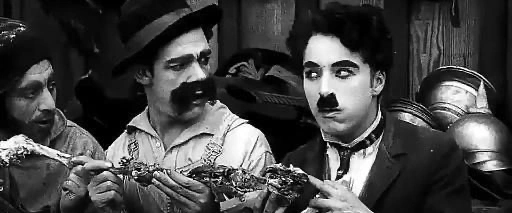
The Great Dictator marked a turning point — not just in Chaplin’s career, but in the cultural role of cinema itself. It was a fearless artistic act at a time when neutrality was safer and silence more common. The film’s final speech — where the barber, mistaken for the dictator, delivers an impassioned plea for peace, unity, and compassion — remains one of the most powerful moments in film history. It was a direct appeal to humanity, not just to moviegoers, and it resonated far beyond the screen.
Chaplin’s genius lay not only in his physical comedy and timing but in his ability to layer humor with heartbreak. He made people laugh, then made them think. Films like City Lights (1931), which follows the Tramp’s attempt to help a blind flower girl, blend slapstick with aching tenderness. The final scene, in which she finally sees him for who he is, is as emotionally raw as anything in dramatic cinema. That balance — between the absurd and the profound — became Chaplin’s signature.
Though often associated with the silent era, Chaplin resisted the move to talkies longer than most. He believed that visual storytelling was more universal — transcending language, class, and culture. Even when sound came into the picture, he used it deliberately and sparingly. He scored many of his films himself, composing musical themes that captured the soul of each story. His talent was not confined to acting and directing — he was a multi-disciplinary creator at a time when the industry was still discovering its potential.
However, Chaplin’s outspoken politics and refusal to conform to Hollywood’s increasingly conservative climate during the Cold War era led to controversy. His left-leaning views and criticism of capitalism and nationalism attracted scrutiny. In the 1950s, as anti-Communist hysteria gripped the United States, Chaplin became a target of the FBI and the House Un-American Activities Committee. While never proven to be a Communist, his refusal to testify and his growing criticism of U.S. policy made him persona non grata.
In 1952, during a trip to Europe, his reentry permit was revoked — effectively exiling him from the country that had made him a star. He relocated to Switzerland with his family and continued to work, though less frequently. His later films, such as A King in New York (1957), carried biting satire about American culture, surveillance, and the loss of privacy — themes that remain strikingly relevant.
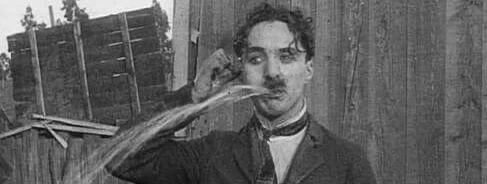
Chaplin’s exile didn’t diminish his legacy. In fact, time only clarified his brilliance. In 1972, after two decades away, he returned to the United States to receive an honorary Academy Award. The moment was profoundly emotional — a standing ovation that lasted over 10 minutes, acknowledging not just his contributions to film, but his courage and conviction as an artist.
Until his death in 1977, Chaplin remained committed to the ideals that shaped his life’s work: that comedy could challenge cruelty, that art must serve truth, and that dignity belongs to everyone — even the poorest, the oddest, the most overlooked.
Today, Charlie Chaplin is more than a historical figure — he is a language of cinema itself. His silhouette is instantly recognizable, but more importantly, his legacy endures in every film that dares to mix laughter with meaning, and in every artist who uses their platform to speak for those without one.
He once said, “To truly laugh, you must be able to take your pain and play with it.” That’s exactly what he did — and in doing so, he gave the world something far more lasting than entertainment. He gave it empathy.
In 2025, Margot Robbie reinvents herself in the gritty crime drama “Queen of Crime”, leaving behind comic-book chaos for the shadows of noir realism. Directed by Sarah Polley, the film is based on the true story of Diane Morris — a London-based woman who rose to power by building a secret financial empire during the turbulent 1980s, amidst corruption, gender politics, and high-stakes betrayal.
Robbie portrays Diane not as a stereotypical mob boss, but as a brilliant, dangerously charming strategist who juggles power and motherhood, ambition and moral compromise. It's a far cry from Harley Quinn — here, she plays a composed, calculating woman who controls everything until one critical alliance collapses.
The narrative spans Diane’s rise, reign, and reckoning, laced with suspense and psychological intensity. The aesthetic leans into noir elegance: smoky lounges, sharp silhouettes, and vintage jazz framing her empire’s rise and fall. Supporting cast includes Dominic West, Vanessa Kirby, and David Thewlis.
Set to premiere on November 17, 2025, at the BFI London Film Festival, Queen of Crime is already being called Robbie’s most mature performance yet — a transformative leap into prestige drama, where she doesn’t just play a queen, she becomes one
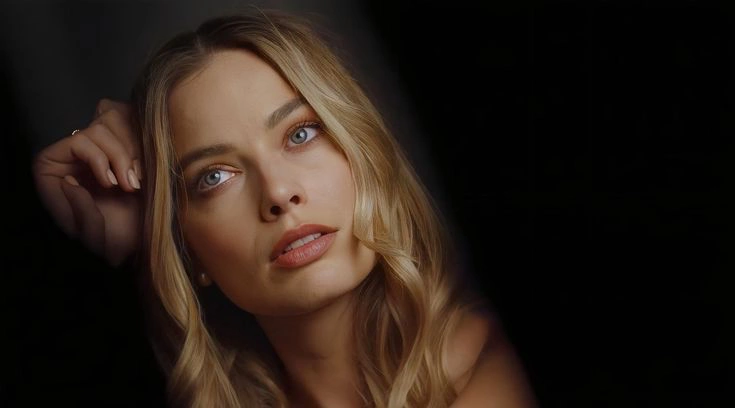
Queen of Crime isn’t just another entry in the true-crime genre — it’s a cinematic reinvention. At its core, the film is a character study about control: who wields it, who fears it, and what it costs to keep it. Diane Morris, brought chillingly to life by Margot Robbie, is no cartoonish mastermind — she is human, brilliant, bruised, and burning with purpose.
Set during Thatcher-era London, a time when power structures were shifting but still deeply hostile to female ambition, the film peels back layers of history, gender dynamics, and criminal sophistication. Diane operates in a man's world, but she doesn't try to mimic her male counterparts — she outthinks them. Her criminal empire is constructed not with violence, but with precision: shell companies, coded messages, and high-level manipulation. She launders money not through nightclubs, but through cultural institutions and luxury real estate.
Robbie’s Diane is cool under pressure, but the cracks show at just the right moments. In private, she's a mother shielding her son from the life she's built. In public, she's an enigma — impeccably dressed, eternally watchful, and always three steps ahead. The role demands subtlety over spectacle, and Robbie delivers it with simmering control. Her performance is less about dramatic outbursts and more about the stillness that precedes them — the long glances, the tightened grip on a champagne flute, the soft voice that carries razor-sharp warnings.
Director Sarah Polley infuses the film with a haunting tone, blending 1980s grime with timeless noir. There’s a tactile richness to every scene: flickering neon signs, the sound of stilettos on wet pavement, the hiss of jazz from an old record player. The film draws inspiration from classics like The Long Good Friday and The Third Man, but updates their sensibilities with a distinctly feminist lens.
Dominic West plays a corrupt banker with personal ties to Diane, their chemistry crackling with both danger and history. Vanessa Kirby takes on the role of Diane’s estranged sister — a social worker whose moral clarity becomes a mirror Diane tries desperately to avoid. David Thewlis, in a standout supporting role, is a disgraced detective who becomes both threat and confidant, circling Diane’s world with suspicion and reluctant awe.
The screenplay, penned by Abi Morgan (The Iron Lady, Shame), refuses easy resolutions. Diane isn’t romanticized — nor is she punished in simplistic ways. Her world is messy, morally gray, and painfully real. The film explores how women are judged differently when they seize power — seen as ruthless for the same strategies that make men legends. In Queen of Crime, every glance, every deal, every betrayal carries double meaning: one for the world she’s navigating, and one for the mirror she avoids.
At the heart of the film is a question: Can a woman change the game without becoming what she once despised? Diane’s arc is both tragic and triumphant, her rise built on the ruins of trust, and her downfall tangled in loyalty too long deferred.
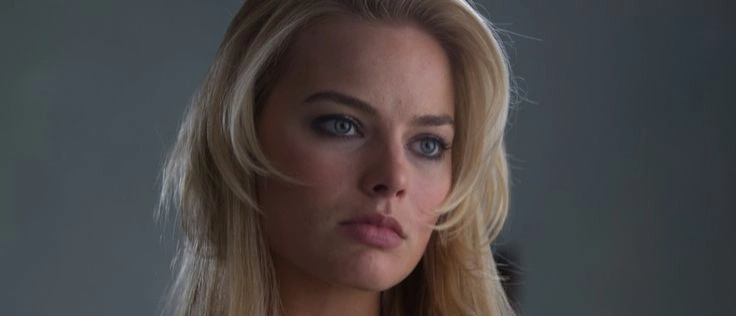
Queen of Crime doesn’t just mark a turning point in Margot Robbie’s career — it redefines it. With this role, she sheds her blockbuster persona and steps fully into the realm of character-driven prestige storytelling. Critics are already hailing the film as a slow-burn masterpiece — a rare blend of art-house aesthetics and commercial appeal.
With its world premiere set for the BFI London Film Festival on November 17, 2025, and Oscar buzz already building, Queen of Crime is poised to dominate conversations long after the credits roll. It’s not just about a woman who broke the law. It’s about a woman who rewrote it.
In 2025, the long-awaited prequel to the Mad Max universe — “Furiosa” — brings Anya Taylor-Joy to center stage in the title role. She plays the younger version of the fierce warrior originally portrayed by Charlize Theron. Director George Miller returns to the wasteland with his signature chaos, chrome, and mythic scale.
The film explores Furiosa’s youth and abduction by a warlord named Dementus (played by Chris Hemsworth). Anya underwent intense physical training and emotional preparation. Miller described her performance as a blend of fiery resilience and hidden sorrow — a side of Furiosa never before seen in Fury Road.
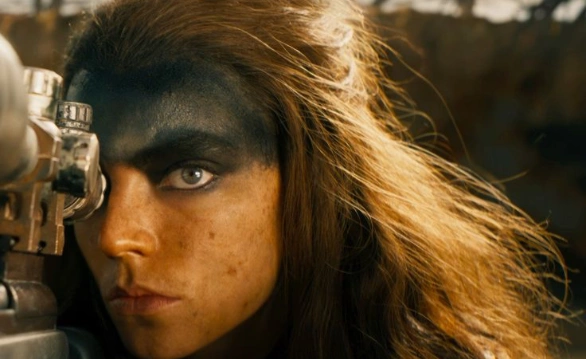
Furiosa is not just a return to the wasteland — it’s a rebirth. Where Mad Max: Fury Road delivered explosive momentum and minimal exposition, Furiosa takes a deeper, more introspective route. It traces the painful forging of a legend — how a girl torn from home becomes the relentless rebel we meet years later behind the wheel of a war rig.
Set years before the events of Fury Road, the prequel reveals a younger, more vulnerable Furiosa — not yet the war-hardened general, but a captive, a survivor, and eventually, a strategist in a brutal world without mercy. Director George Miller crafts a narrative that stretches across decades, showing not just battles, but transformations.
The film introduces the “Green Place” of Many Mothers not as myth, but as reality — a lost sanctuary that shaped Furiosa’s ideals and sense of justice. Its fall becomes the emotional engine of her story. Torn from this place of fertility and knowledge, Furiosa is thrust into the oil-and-blood economy of the Citadel system, where warlords carve up power and survival demands violence.
Chris Hemsworth’s Dementus is a striking addition to the Mad Max rogues’ gallery — a flamboyant, manipulative tyrant who uses charisma as a weapon. Far from a one-note villain, Dementus sees himself as a savior, building an empire from the wreckage of civilization. Hemsworth brings a twisted vulnerability to the role, oscillating between fatherly mentor and sadistic oppressor. His complex relationship with Furiosa becomes the film’s central axis: not just a battle of strength, but of identity.
Anya Taylor-Joy disappears into the role. Her Furiosa is defined not by dialogue, but by eyes that observe, calculate, and remember. She’s frequently silent, yet the performance speaks volumes — conveying the burden of memory, the slow build of rage, and the hunger for freedom. Her physicality is raw, and every scar has a story. It’s a coming-of-age tale in a world where innocence is not lost — it’s stolen.
The cinematography, once again helmed by Simon Duggan (with influence from Fury Road's John Seale), is breathtaking. The desert isn’t just a backdrop — it’s alive with shifting light, roaring storms, and ruins that whisper of a fallen world. The vehicle design leans more toward the skeletal and improvised, evoking an earlier, more chaotic phase of post-apocalyptic engineering.
While the action remains kinetic and grounded in practical effects, Furiosa offers a more lyrical pace at times — dreamlike sequences, night raids lit only by fire, and moments of stillness that emphasize isolation. Miller builds a mythological tone through ritual, costume, and symbols — from body paint to battle standards — all speaking to a fractured culture struggling to redefine power and purpose.
Tom Holkenborg (Junkie XL) returns with a thunderous, emotionally layered score. Brass blares meet ethereal synths, war drums pulse beneath whispered chants. The music doesn’t just energize action scenes — it weaves into the film’s soul, marking Furiosa’s internal evolution.
At its core, Furiosa is not just about survival — it’s about reclamation. Of identity. Of justice. Of a future stolen too soon. It’s a story about a girl made into a weapon, choosing to become a liberator.
As the engines roar and the sand flies once more, Miller reminds us why this universe endures: because amidst destruction, there is always a flicker of rebellion — and one woman, born in fire, ready to lead the charge.
For Taylor-Joy, acclaimed for The Queen’s Gambit, The Witch, and Last Night in Soho, this is a landmark role — not just another action film, but a character-defining odyssey. Premiering in May 2025, Furiosa has already been hailed as one of the greatest action movies of the decade.
The second edition of the Basketball Champions League Asia (BCL Asia), FIBA Asia’s premier continental club competition, is taking place in Dubai from June 7 to 13, 2025 . The group stage runs at Sheikh Saeed Bin Maktoum Sports Hall, while the climactic knockout rounds are set for the state-of-the-art Coca‑Cola Arena
Nine elite teams from across Asia are competing: Al Riyadi Beirut (Lebanon), Utsunomiya Brex (Japan), Ulaanbaatar Xac Broncos (Mongolia), Meralco Bolts (Philippines), Shabab Al Ahli (UAE), Taoyuan Pauian Pilots (Taiwan), Zhejiang Guangsha Lions (China), Changwon LG Sakers (South Korea), and Tabiat (Iran). The top eight advanced to the finals, battling for a place in the FIBA Intercontinental Cup
The knockout stage is packed with intensity: quarter-finals on June 11, semifinals on June 12, and the third-place game followed by the grand final on June 13 . In a standout semifinal, Utsunomiya Brex overwhelmed the Broncos 93–71, setting a tournament record with 19 made three-pointers — the most in a single BCL Asia game in the last decade
Also notable is Al Riyadi’s semifinal victory over Shabab Al Ahli (100–78), even amid squad challenges, marking their return to the finalsThese high-stakes matchups underscore the level and intensity of Asian club basketball.
Dubai provides a fitting backdrop — world-class venues, excellent logistics, and an electric fan atmosphere at Coca‑Cola Arena draw attendees from across the region, transforming the tournament into a true celebration of the sport
BCL Asia 2025 is more than just a tournament. It’s a cultural milestone displaying Asia’s rise in global basketball, the competitive spirit of its clubs, and the growing ambition of the region. This event signals that Asian basketball is ready to shine on the world stage.
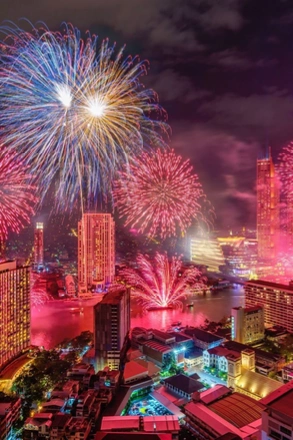
What sets BCL Asia apart isn’t just the caliber of play — it’s the convergence of regional pride, evolving basketball identities, and the dynamic clash of styles. From the fast-paced perimeter focus of East Asian teams to the physical interior game preferred by West Asian powerhouses, each contest becomes a study in contrast and adaptation. Teams are not only battling for a trophy, but also to define how Asian basketball will be represented globally.
Emerging stars and seasoned veterans have shined throughout the tournament. Utsunomiya’s sharpshooter Ryota Shinoyama has turned heads with his court vision and deadly accuracy from beyond the arc, while Changwon LG Sakers’ forward Lee Kwan-hee delivered several highlight dunks and defensive masterclasses. For Meralco Bolts, rising guard Aaron Black proved to be a two-way threat, blending hustle with creative ball movement.
Meanwhile, crowd favorite Al Riyadi’s run has been powered by team cohesion and experience. Despite injuries to key players, the Lebanese club leaned on its core leadership, including longtime captain Amir Saoud, who continues to deliver under pressure with clutch shots and on-court composure. Their decisive semifinal win reaffirmed their status as a cornerstone of West Asian basketball dominance.
The coaching dynamics have also contributed to the tactical richness of BCL Asia 2025. Zhejiang’s head coach Wang Bo brought a surgical approach to match preparation, while Shabab Al Ahli’s Serbian tactician, Dejan Radonjić, fused European discipline with Gulf flair. Such diversity in philosophies is emblematic of Asian basketball's increasingly global influence.
Beyond the hardwood, the event has attracted attention for its cultural impact. Dubai has transformed into a regional hub for sports diplomacy and basketball marketing, with pop-up fan zones, youth clinics, and networking events hosted in parallel with the games. The Coca‑Cola Arena, with its immersive lighting, live DJs, and digital fan engagement features, has elevated the spectator experience into something worthy of a global final.
FIBA’s vision for the Champions League Asia is clear: to establish a continental club hierarchy that mirrors the structure of Europe’s EuroLeague or Latin America’s Liga Sudamericana. This year’s edition, with its increased media visibility, streaming deals, and sponsor interest, represents a pivotal step toward that ambition. Conversations have already begun about expanding the format to 12 or 16 teams in 2026, as more domestic champions push for inclusion.
Looking forward, the champion of BCL Asia 2025 will not only earn a coveted spot at the FIBA Intercontinental Cupbut will carry the pride of a region that is no longer on the periphery of international basketball — but ready to claim its seat at the table.
The message from Dubai is loud and clear: Asia is not just participating in global basketball — it's becoming a force to be reckoned with.
